
5 Essential SEO Practices for Enhancing E-commerce Product Pages
In today's market, e-commerce websites must focus on capturing a more significant share of the highly sought-after "long-tail" traffic, known for its exceptional conversion rates. While also paying attention to essential SEO best practices in their operational framework. The allure of "long-tail" generated traffic lies in its ability to convert efficiently, presenting online retailers with a valuable opportunity to boost sales.
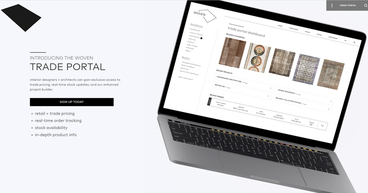
Harnessing the Power of Online Portals for Effective Sales Management
In the evolving digital sphere, businesses are no longer confined to basic online brochures. However, some executives might still be in the dark about the transformative advantages certain web-based tools can offer. Among these groundbreaking tools is the self-service dealer/distributor portal, now an imperative for innovative enterprises.

The Future of E-commerce Predictions and Trends for the Next Decade
The rapid rise of e-commerce in recent years has completely transformed the traditional retail industry. People no longer need to leave the comfort of their homes to satisfy their everyday shopping needs at brick-and-mortar stores. On the other hand, consumers worldwide have wholeheartedly embraced the convenience and seamless experience of online shopping. As we look to the future, it is intriguing to ponder what lies ahead for e-commerce. This insightful blog post will delve into the predictions and emerging trends poised to shape the e-commerce landscape for the coming year and the next decade. Get ready to explore an exciting world of possibilities as we uncover the potential advancements and game-changing innovations that will define the future of e-commerce.

Embracing the Digital Shopping Revolution: How Businesses Can Thrive in the Age of Online Shopping
With the rise of the internet, technology has played a significant role in transforming every aspect of our lives. One of the most prominent changes in the digital age is the growing popularity of online shopping. People increasingly turn to the internet to purchase products and services, from fashion to groceries. As a result, e-commerce platforms have taken center stage and become an essential element of modern business. This post will discuss why embracing the digital shopping revolution is crucial and how businesses can thrive in a competitive online marketplace.

5 Essential E-Commerce Best Practices to Boost Your Product SEO
The competition has become more challenging as the e-commerce industry continues to flourish. With the increasing number of online stores and products, it's essential to implement the best practices to boost your product SEO. It takes more than a beautiful website design to attract potential customers and generate revenue. In this blog post, we'll explore five essential e-commerce best practices to help you optimize your product SEO and stand out from your competitors.

Get Your Ship Together - 5 Ways to Improve Your E-commerce Shipping Process
Running an e-commerce store can be overwhelming, with many things to consider. One of the most important aspects of running a successful online store is having a seamless shipping process. Shipping not only impacts the customer experience but also plays a significant role in the profitability of your business. You want to ensure your items reach customers quickly, safely, and hassle-free. This post will discuss five ways to optimize your shipping process to improve the overall customer experience and grow your business.
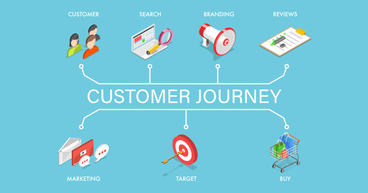
How to Optimize Your E-Commerce Store for Maximum Conversions
In today's digital age, e-commerce websites are becoming increasingly important to physical stores and consumers who prefer to shop online. With increasing competition, e-commerce stores must optimize their websites for maximum conversion. In this blog post, we'll discuss practical strategies to help you increase your e-commerce store's conversions.

Run a Successful Social Media Contest: "Share to Win!"
Are you eager to amplify your brand's social media presence, supercharge your reach, and spike your sales volume? If the answer is a resounding 'yes,' orchestrating a social media contest could be your golden ticket. The "Share to Win" contest is among the most engaging social media contests. This strategy is elegantly simple but brilliantly effective: Encourage your followers to share your content on their social media channels, follow your page, and in return, stand a chance to win an exciting prize. This blog post will serve as your comprehensive guide to running a high-impact "Share to Win" social media contest guaranteed to win hearts and clicks.
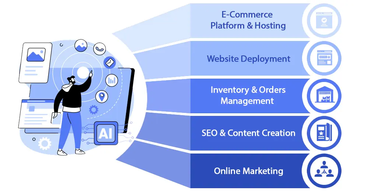
The real cost of managing an e-commerce website
Managing an e-commerce website is nothing short of solving an intricate puzzle. The more you try to solve it, the more perplexing it gets.
It's tempting to try to unravel it by focusing on just one thing at a time, but that's not how the cost management of e-commerce websites works. What you see isn’t always what you get. Understanding the true nature of the costs requires peeling back several layers at the same time.

How Can I Tell When My E-Commerce Store Needs an Update?
E-Commerce is the future of businesses. More and more consumers are shifting to online shopping than going to big-box, brick-and-mortar stores. In fact, in 2021, experts projected that worldwide e-commerce sales reached $4 trillion. With that, it is critical to know whether a company’s e-commerce website is truly helping them attain its goals.
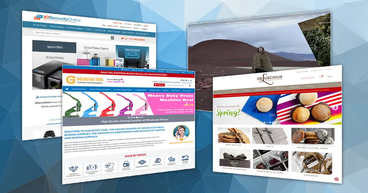
10 Benefits of Custom Web Design for E-Commerce Businesses
When researching the best web design for your e-commerce business, you likely know there are hundreds, if not thousands, of pre-made website templates available. Some of those website templates are even free, or drag and drop website companies lure you with their vast library of templates (for a price, of course).

Reduce Expense & Increase Profits with Knowledge Management (KM)
This is certainly true in the area of IT, health care and business processes in manufacturing management where the exit of a key employee can often lead to a highly expensive process in which the company must "reinvent the wheel." But less technical knowledge, such as client preferences or internally developed process improvements, can prove costly when lost.

The Value of Community: Turning Customers into Advocates
One of the most challenging lifts for your marketing department is to find customers who want to engage and then regularly interact with them. Building and fostering an online community solves that concern by giving customers a way to come to you for the conversation beyond any helpdesk needs.

How to Painlessly Upgrade Your Company Website and CMS
Upgrading your company’s website CMS is always a headache. From web pages and blog articles to images, videos, and even metadata, there’s a huge amount of content to identify, categorize, and move.
But not all companies have the same challenge ahead of them when they decide to upgrade their CMS. For instance, small companies usually have less complex web environments to migrate than mid-sized or large companies, making their transition more manageable.

Why Your Competitors Are Automating Lead and Quote Management
Name any business that doesn’t need to make another sales call or email tomorrow to have a robust future full of growth. If you didn’t name your company, then we want to share our thoughts on lead and quote management automation, especially for broad product catalogs, and why it might be a smart move to improving your sales pipeline.

Transforming Your Legacy Website into a High-Performing Web Property
Giving your company’s online presence a modern upgrade is more than just a nice-to-have, it’s an absolute necessity.
As today’s technology advances to meet consumer expectations, the most successful companies are rising to the challenge with high-performing websites that go beyond merely establishing a web-based property.

Multi-Channel Content Management
Managing content used to be fairly straightforward. Write the content, post it on your website, add it to another one or two websites, maybe send out an email notice about it, and you’re done. Multi-channel content management wasn’t on anyone’s mind.

How Your Marketing Team Can Measure Social Media ROI
If you're not using social media as part of your company's marketing efforts, then you're not marketing as effectively as you could be. And this could be frittering away your marketing budget.
In this digital age, social media platforms such as Twitter, Facebook, and Google+ provide a way for you to boost brand awareness, reach out to a critical mass of customers and potential clients, and increase site traffic on your e-commerce site. But you first need a good plan to use social media as a marketing tool -- and that includes understanding how to measure ROI.

Bundling and Kitting Products – A Great Way to Improve Customer Experience and Online Sales
Bundling and kitting products is a great idea on a number of levels. Kitting (aka “bundling”) is the grouping/pairing, packaging, and marketing of separate but related, complimentary, and compatible products for sale or presentation as one unit. Multiple products are sold as an individual SKU. “Kitting” and “bundling” are interchangeable terms in this context.
Companies, merchants, and promotional teams love product bundling because it just makes their job easier, it makes them more effective, expands choices, makes their customers happy, and is a powerful tool for moving merchandise and increasing revenue.

How Your Business Can Take Advantage of Snapchat
Maybe you’ve heard of Snapchat. It’s an app that allows users to send photos and short videos to other users – but after a limited amount of time, the material vanishes. This feature made Snapchat notorious especially among teens, who found it easier to get away with sexting and bullying when the evidence disappeared. But Snapchat’s demographic is widening. Now moms love it too, and pretty much any female between the ages of 18 and 35.
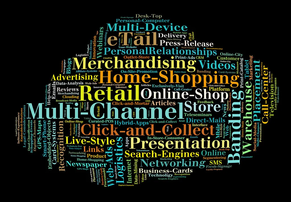
Personalization and Multi-Channel Publishing
In today’s business world personalizing web-based content, and its delivery, to meet each user’s needs is a competitive imperative for online enterprises. To be most effective, information should be tailored to individual users’ preferences and status, including the type of device they use.
Adrecom’s CMS Suite delivers the solutions you need to design and implement highly effective personalization techniques that offer tailor-made environments to visitors. By offering dynamic content that varies with user behavior, choices, status, and needs, you dramatically enhance your website’s utility, magnetism, and user comfort levels—which, of course, translates into higher conversion rates.
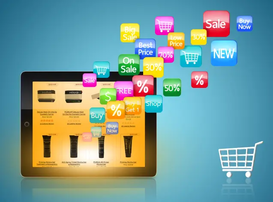
Configurable product options and variations for improved shopper experience and conversion
Nearly all products have options of some type or another and presenting them clearly is of great benefit to businesses. I look at the benefits of how product variations can improve your business and make your customers happy.
A cosmetics website has many products, while each product has a number of color or shade options. The user interface was designed to feature color swatches related to the product. The product variations here allows the e-commerce and purchasing process to be simplified. The customer doesn't have to see the same product multiple times with the different colors but rather see a clear presentation of the products with its options. This example illustrates how product integration can improve navigation on the page and search results throughout the site. This simplified presentation with the improved user experience leads to an improvement in the revenue stream.

Why is User Generated Content so Important?
The internet has created a number of social media and review sites that play a very important role in decision making and forming opinions about a complete range of products and services. 25% of search results are made up of these review and UGC orientated sites making them very powerful. As various reports have shown gen-Y or millennials, following the baby boomers, constitute a major part of purchases and internet activity. They are group orientated buyers, primarily because they have been influenced by their baby boomer parents who have similar characteristics. 73% of millennials said that consumers care more about customers reviews than businesses does. That clearly presents the power of UGC.

Four Great Mobile Solutions for your Website
With sales of mobile devices increasing significantly over the years, users have incorporated their mobile devices to search for information and buy things, which has increased tremendously. 46% of Americans said that a mobile device is their primary way of accessing the Web and 2014. Ecommerce doubled from 2012 to 2013 with 2014 likely to continue. These figures show how important it is for businesses to consider which mobile solution work for them and more importantly their customers.
Whatever type of mobile solution you choose, there are great services that bring great value to your mobile solution. Firstly you have the ability find out where your users are and provide services that are relevant according to their location. This is probably the most exciting added value for your application if it’s a native app or responsive website, it can really help you bring a great service to your customers. Others use the camera and the fact at the end of the day you have a phone that can access information with touch capabilities so you can make it easy to contact customer support.
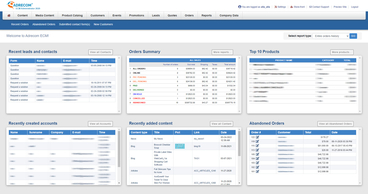
Unified web site management backend enable effective multi channels web presence operations
Businesses have a website to communicate with customers online, best practices dictate that businesses further develop smaller mini sites along side their main site to reach a particular segment of the market that might be defined by language or a particular interest. Without the necessary planning, businesses can find themselves without suitable website management. Each site might use different infrastructure making it costly to manage minimizing the effectiveness of the overall presence online and particularly each individual website. With the development of a full service, unified backend you can manage the full range of websites and a smooth transition to a mobile presence and complex marketing strategies.

Discussing Vital Questions Social Marketers Should Ask Themselves
As appealing as social media sites are to basic users, they’ll always be more appealing to advertisers and brands looking to increase reach and response. That’s because social networks are driven by advertising dollars and are thus constructed to be ad-friendly places, wherein a little bit of marketing really does go a long way.
That being said, though, it’s still important to realize that social media marketing isn’t necessarily an easy thing to do. There are many different hurdles out there to jump and a slew of different problems which may trip you up. So before you launch any type of marketing strategy, you should always sit down and take a closer look at what it is you’re trying to accomplish. Start by asking yourself some important questions related to social marketing.
E-commerce solution Open Source Close Source Debate
In the world of developer’s and consultants supplying software to commercial clients, there have always been core issues which dictate the choice of one software solution over another. In the world of website development — more specifically eCommerce — the “core issues” which were once so numerous have now taken on a new wavelength - that of the open vs closed source software solution. What this article will set out to accomplish is to convey a more current understanding of the choices clients are evaluating and see if there is a 3rd alternative that can bridge the gap between the poles of what is currently seen as the only two choices.

Overview of Guiding Principles of B2B Web Site Design and Implementation
So you finally got promoted within your family owned business to take on the reigns of bringing your company's online web presence into the 21st century. If your company's experience is similar to many other businesses in its space - especially the manufacturing space - the odds are reasonable that you are sitting on what we call a "me too" website - just enough to complement your brand and logo and give people a way to connect with you but not much more. Considering our more than a decade of experience in managing companies' online web presence, the following is a summary of our step-by-step guide to designing a new high functioning b2b ecommerce site and moving beyond a simplistic brochure ware type of website. Read on as we dissect the challenge and give you some simple steps to look like a hero in a short amount of time.

Boosting an Ecommerce Business with Social Media
Big brands like Pepsi and McDonald’s, with tangible products and live locations, certainly aren’t the only companies out there benefiting from social media sites like Facebook. Ecommerce businesses are also doing quite well with Facebook.
Of course, ecommerce is unique in the sense that the transactions are taking place solely online, but once you break it down, you realize that it’s really an even playing field. Nobody is able to sell their products directly from a fan page; everybody is simply attempting to build awareness to boost their brand with the ultimate goal of increasing sales. And, yes, your ecommerce business can benefit from this too.

Configurable and Personalized Products – Complex Selling Made Simple
Offering customers the ability to configure and personalize products is an increasingly feasible and successful way to bolster sales. And it’s very popular among buyers — especially amid today’s “express-your-uniqueness” consumer mindset.
eCommerce platforms can now be designed to include product “Configurators”, which allow customers to define many features of a product before ordering it, and before it’s made. No longer is it just a few basic choices, but high-level, true customization and personalization to fit one’s personal style and taste. Color, material, size, measurements, inscriptions and insignia, finishes, embroidered text, monograms, graphics and logos are just a few of the countless variables that customers can specify when ordering a product.

Social Interaction and Online Visibility
In the U.S., social media is used by over half the population – 158 million people – a stunning new development in our culture and history. As such it poses a tremendous opportunity for ecommerce companies to connect with the market, create active dialogs around their brands, and develop rapport and familiarity before giving prospects a direct sales pitch. Wise use of social interaction is now a very effective way to condition the market, thus paving the way for sales.
Smart Ways Businesses use Social Networks – Here are just some of the ways today’s smart businesses are using social networks, social data, and interaction to deliver better products and services, and improve their bottom line

Managing Promotions within Your E-Commerce Platform
Selling products and services through online e-commerce affords many opportunities for effective promotions. In e-commerce any mechanism that aids in inducing a sale is a promotional tool. There are many different promotion types.

The Content Transfer and Migration Process
For managers responsible for web-site updates, one part of business website renovation keeps them awake at night: the transfer of legacy content from an existing site (or sites) to a newly developed site. Migrating content to a Content Management System (CMS) is a very important part of managing a business’ web presence. It is a difficult, time consuming, meticulous process and requires organizations to allocate significant resources, and train management teams in transfer issues.
Content accumulated over many years creates a maze of structured and unstructured data that can make the migration process potentially disruptive to ongoing operations. The objective of the process is high-performance web migration, which requires first that the parties have a clear vision of what must be accomplished through the migration, and that they then plan the steps necessary to implement the vision.

How Shipping and Delivery is Crucial to the E-Commerce Industry
For most online businesses, shipping can be one of the most difficult aspects of running an ecommerce site. Based on their experiences and observations of other sites, shipping costs and delivery time-frames are the biggest customer complaint that online retailers receive. A recent study confirms shipping to be one of the most important things to shoppers. Even if the shipping is free, customers often have obscene expectations on how fast their order will reach them. If it’s not free, there are always complaints about the cost even when the merchant directly passes down fees with no markup.
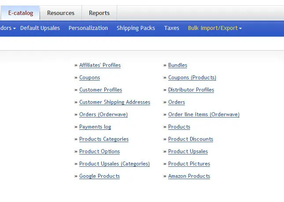
Streamline your ecommerce with the Right QuickBooks Integration Tools
QuickBooks has become an internal accounting fixture for a very large number of businesses. It is a solid bit of accounting software that businesses rely on very heavily to manage their operations, taxes, and financial information.
Today, many of the companies that have grown so reliant on QuickBooks have also developed, or are planning to develop, ecommerce platforms through which they conduct an increasingly large number of B2B or B2C business transactions. Still others are contemplating expanding to multiple online sales channels. Tracking all sales, customers, accounting, inventory and shipping in these circumstances can be daunting. While some can manage the separate online and local systems independently for a while, eventually it becomes necessary to merge the ecommerce transactions and related data into the QuickBooks system in a reliable, automated way so that accurate information is always at managers’ fingertips. Attaining the highest level of integration is important. Maximizing interface automation and efficiency has a direct impact on cost control.
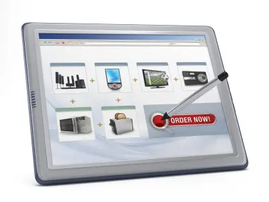
Multi channels e-commerce management improvements by automation web store data exchange with back office applications
If your company conducts business online through an eCommerce application, and that eCommerce system runs independently of your other internal business-management software (for accounting, ERP, fulfillment, etc.), odds are very good that your organization is wasting a lot of time and money. Today, smart businesses recognize that integrating their online eCommerce systems with their internal operating software dramatically improves administrative efficiency and reduces costs.
Many business owners and managers may, however, hesitate to link these distinct systems together for fear of complication, confusion, or data loss. But, today such fears are unwarranted. Enterprises using “third party” software systems to manage their operations (like QuickBooks, Intuit’s accounting and financial-management suite) can and should secure the integration of data between their internal and eCommerce operating systems, for doing so is now possible and highly reliable with the right integration tools.

Social Media Become Vital Tool of E-Commerce Marketing
It is not a mystery that social media sites are excellent marketing tools for all types of businesses, but e-commerce sites have an advantage when it comes to using the different networks. For one, consider the e-commerce target market: online shoppers. People who spend their time on the Internet searching for products to buy are more than likely spending time on social media sites as well. This is just one reason why social media cannot be overlooked as a vital online visibility and marketing tool within the e-commerce industry.
Promoting products and services on sites such as Facebook, Twitter and blogs are a great way to drive consumers to your site and make sales. Social media outlets are good tools for link building and therefore by posting URLs that link back to your site, you are more likely to see an increase in traffic. Social media gives businesses the means to direct traffic to whichever site they want, whether it is a product giveaway on a blog site or a link to a coupon. E-commerce sites have an advantage over brick-and-mortar businesses because their consumers are just a click away from their products and do not have to travel into a store.

Web Solution: Dealers and Distributors Portal
More than ever before, business enterprises offering products or services seek effective tools to improve their interaction with a fast-paced marketplace, and increase sales. Fortunately, businesses today can efficiently utilize their online presence to enhance business interaction, accelerate growth, and keep up with the competition. Online portals designed to attract, enlist, and support distributors, dealers, and resellers, interact with customers, and manage sales transactions are becoming quite sophisticated, increasingly user-friendly, and capable of dramatically expanding the reach of any business, while increasing efficiency and lowering costs.

What is a Legacy Application or System?
Legacy applications are those that have grown over many years as an enterprise has developed, and they usually have unique features and capabilities essential to the business’ operation. As a result, they are difficult to replace or integrate with emerging modern systems and technologies. Organizations often run outdated web properties comprised of large collections of html pages built over long periods by many different people, or home-grown software, created by individuals no longer with the organization, with structures that no one knows enough about to feasibly add new elements. Some companies run large commercial systems that are very expensive to upgrade or that originated with vendors no longer serving the market. Still others use open-source systems like WordPress that, while simple to set up and use, don’t support the more advanced options required, or are very time consuming or expensive to modify or supplement.
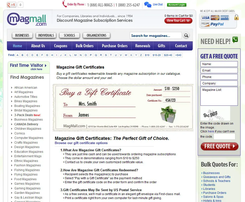
The Utilization of Gift Certificates from an E-Commerce Perspective
For consumers, online shopping has benefits such as convenience and comparison. For companies, it gives the advantage of a national reach, builds loyalty and credibility and increases revenue. But how do companies maximize that revenue when it is easy to get lost on the web under the vast number of companies? Well, the easy answer is to become a client of any online store and use their technology to optimize your location on the web, streamline the navigation of your website, effectively promote your products and simplify the check out process. But if you don’t have time for such a large commitment, you should consider posting coupon codes.
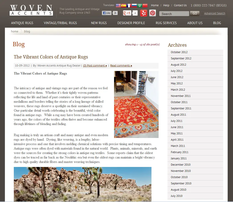
Best Practices of Enterprise Blogging
Adrecom's
Enterprise Blogging Suite is a powerful engine that provides essential tools
for efficiently creating attractive, content-rich blogs that increase your
impact and reach. Adrecom’s blogging tools allow you to accommodate multiple
authors while synthesizing and organizing their posts, manage and pre-configure
social media interaction, pre-schedule posts, categorize posts, efficiently
link to related posts, and automatically moderate blog responses.
But, content is
still king. What you say and how you say it have everything to do with whether
your blog succeeds in its mission. Having the right blogging tools can take
your content to another level.

Adrecom's E-Commerce Solutions for Cross-Selling
Cross-selling is a marketing term for the practice of suggesting related products or services to a customer who is considering buying something. Also referred to as suggestive selling, it is a sales technique whereby complementary products are presented to a customer after the customer has demonstrated a desire and willingness to purchase a particular product. Often, cross-selling involves offering the customer items that complement the original purchase in some manner. The idea behind cross-selling is to capture a larger share of the consumer market by meeting more of the needs and wants of each individual customer. Online merchandising is one of the most important aspects of e-commerce. In order for e-tailers to generate profitable sales, they must use e-commerce sales tactics in order to navigate their customers to the products they want to purchase.
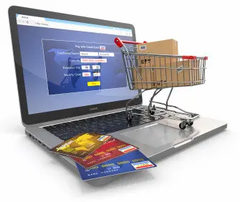
E-Commerce Best Practices and Up-Selling
Up-selling is a sales technique commonly used by vendors to ingeniously encourage their customers to purchase more expensive items, upgrades, and add-ons in attempt to make a more profitable sale. Up-selling usually involves marketing more profitable services or products but can also be simply exposing the customer to other options that were perhaps not considered previously. For instance, if a customer was looking to purchase a certain product, a salesperson may try to convince you to buy the accessories for it whether you need it or not. When a customer is looking to make an online purchase, the webpage will feature accessories that the customer can purchase along with that item.
E-commerce Storefront Renovation
E-commerce storefront renovation is the process of redesigning your site in order to improve its design, functionality and technical elements. While affecting this renovation, remember that a complete overhaul is not always necessary - it might be sufficient to change either the look or the feel of the site, but not necessarily both.
Online Event Management
Online event management is considerably an easier alternative to event management. Rather than relying on event planners to organize, supervise and plan your events for you, you can purchase an online management software that allows you to monitor your events in the most systematic and feasible way. Online event management provides a platform to artists, celebrities, fundraisers, organizations and businessmen to promote their talents, products, and businesses. It can be seen as an online marketing strategy tool by various companies.
Advanced Searches for the Seeker of the Specific
Search features can make or break an online store or other content rich website in the internet age. Every minute that an online shopper spends looking for a particular item makes it less likely they will engage with the business. The shopper will either assume the company does not have what they want, or may even leave because a slow or hard-to-navigate site sends the message that the company does not really care about meeting his or her needs.
Members and Business Directories as part of web presence management
Adrecom’s member and business directories are examples of our employment of database-oriented content. Database-oriented pages are dynamic pages that are linked to an internal database that stores member and business directory information. When a back end user, such as a site administrator or member of our team, makes a change in the database the change is reflected on the front end. Information that exists in the Back Office database is sent to the respective page via programming configurations. This way, every time the page is reloaded the changes will be apparent on the front end.
Adrecom's Membership Management Solutions
While Adrecom’s Solutions and Services for Nonprofits & Associations provides highly organized yet flexible content management opportunities, we as well offer advanced portal solutions for non-profit organizations and associations. Our CMS allows membership-based organizations to manage a high volume of members using our practical technology-oriented platform. Administrators can manage member accounts, online registrations, dues collection and donations and online event management and registrations, to name a few, just by logging into the system. For more complex or customized changes our technical team is available to offer advice to clients or to implement the changes on your behalf.

Lead Generation and Customer Interaction Forms
Communicating with your clients, and allowing them to easily communicate with you, is an essential aspect of running your business. For a long time businesses have commonly used certain technological capabilities to accomplish traditional business practices, one of the most commonly-used being the famous online form. The Adrecom Corporate Portal offers all of the standard configurations, such as text fields, radio buttons and dragdown menus, making it very easy to create the right type of form for your site. This blog post therefore covers two technological key ingredients that have become standard cultural norms in the sphere of webstore buying and selling - lead generation and customer interaction forms.
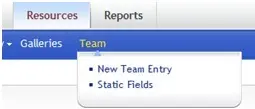
Team Module Integrated into Adrecom Portal Solution
Given that certain types of customers have specific needs, the Adrecom team has developed and integrated the Team module into their corporate portalsolutions repertoire. Categorized under our Resources section, the Team module was designed for businesses and agencies who wish to renovate their web presence by introducing their team and/or staff to the viewing public.Whereas in the past Team information was created within the general structure of the Articles section, used for creating the major bulk of a website’s content, it has now been set aside with its own module designed with features specifically designed for creating individual team member content.
Products Bundles - A Clever Catalog Strategy
The standard e-catalog product is an individual product. However, in almost every industry it is possible to purchase a series of related products in one complete package, known as a Bundle. Bundles are created based on thoroughly-researched and well-documented shopping patterns and customer preferences.
Bundles are a group of products in your catalog sold together as one item. Like with Related Products, these products are clearly related to one another and complement or enhance usage of the base product. The difference is that they are purchased as one unit together. For example, Lobster's Elite Grand V LE is a bundle made of several products, all listed in tandem.
How Media Elements Enhance E-catalogs
Consider, for a moment, that an e-catalog is a popular way to make the shopping experience very easy for customers. Online shopping has certain perks that shopping at brick-and-mortar stores does not have, such as 24/7 availability and readily-provided information about all topics in the content management system. However, in order to overcome the lack of physical access to tangible items – i.e., the useful tendency of picking up an item and looking at it from all angles – web stores need to make optimal usage of high quality product imagery and other media elements, such as video and flash. This blog post discusses how images and video create are a necessary element of a successful e-commerce product catalog.
B2B Web Presence Renovation
At Adrecom, we service a variety of customers in both the B2C (standard business-to-customer model) and B2B (business-to-business) categories. We have carefully and specifically developed the features and applications found in our Back Office to satisfy the business needs of both types of customers. What is largely true about B2B transactions, however, is that their orders and purchases typically involve a larger amount of raw materials. Such companies can make ideal use of our distributor and wholesaler portal, which comes with a tiered pricing model so we have designed our system to make such tiered pricing models and other essential B2B applications plainly visible on the front end as areas of focus.
Product Catalog Management
Product catalog management is a multi-tiered process that allows you to store, administer and add, edit and delete new and existing items to and from your e-catalog. Using the Adrecom CMS Suite you can manage your media assets by simultaneously exporting and import multiple catalogs in bulk for backup and storage. Since there are a variety of different elements that can be exported and imported, suffice it to say that the process for each is slightly different for each application. This post will provide the conceptual model to understand how each application is exported from and imported to the back office. While this post delineates the conceptual model by which exports and imports are carried out, it does not itself instruct you how to perform exports and imports. Since the process is somewhat complex, we have written a series of manuals describing how to perform exports and imports rather than creating video tutorials.
Content Management Automation, Uploading Images in Bulk
Just as you can upload products in bulk to the Back Office, you can also upload images in bulk, although the process is slightly different. Let’s say, for example, that your e-catalog contains an order of some 3,000 products, and each one needs an image. One way of assigning an image to each product is to manually insert an image into each product. While this method is the recommended one for inserting images into a relatively small amount of products, such as 5 or 10, there is another, more efficient method for inserting images into a large number of products, such as 20, 50, 100 or 1000.
Bulk Image Uploading to the Media Gallery
A popular demand for many websites is to display a specified page designated for images. This is especially relevant for image-heavy websites, and for such sites it is beneficial to contain all their images in a gallery versus on individual pages. If a site contains a high volume of images, the image pages can number in the 100’s or even higher. A better alternative is to create a gallery, in which each page displays thumbnails of each of the relevant or desired images. When the user clicks on or hovers the cursor over the image, a larger version of that image is displayed in a separate window. This methodology achieves the desired result of displaying a high volume of images while avoiding a high number of image pages.
How Promotional Coupon Discounts Work
While coupon usage make up a fundamental part-and-parcel of traditional commerce, it is also true that e-tailers have much to gain from making use of promotions and coupons. This post contains a summary of wise and unwise discount practices and how coupons and promotions are used (and should be) in the world of e-commerce.
B2B – Business-to-Business E-commerce
B2B, or business-to-business, refers to purchase transactions taking place between two or more companies or businesses, usually on a large scale. B2B is different from other forms of transaction types, such as B2C, which is the standard business-to-customer model, or B2G, business-to-government. The main activity of B2B is to provide other companies with the items and parts that they will use on the retailer end. For this reason, the raw amount of materials sold between businesses is greater than those sold within B2C. For example, a retailer sells a finished product combined of several items, all of which were purchased either from one or more vendors. In the last decade, business has taken a considerable turn from brick-and-mortar shops to online transactions, a prominent subset of B2B sometimes known as E-B2B. Business-to-business itself is comprised of several subcategories which will be discussed in this post.
What is Good Quality Writing?
What is Good Quality Writing?
There are several aspects to good quality writing and a well-developed blog post takes all of them into account. Reputation, charisma and appearance are important ingredients in the success of any company and they can take you a long way. However, for writing intensive websites, such as those which inform readers about a plethora of topics, the internal aspects need to be thoroughly developed as well. At the end of the day there just is no way to avoid presenting good quality written material that focuses directly on the subject at hand and conveys information in a skillful manner. Information-heavy sites do not have the luxury of not becoming, if they aren’t already, sources of expertise in a particular field or area or writing engaging blog posts.
Pre-scheduling Blog Posts
The purpose of a blog, amongst many, is to provide an interesting informational platform about one or a variety of related topics. Regardless of what you use your blog for, there is one rule that seems to apply universally across the board regardless of what type of blog you actually have – let’s call it one of the blogging constants.
Order Abandonment Minimization
Order Abandonment, sometimes known as Shopping Card Abandonment, is when a customer spends time on an e-commerce website, looks around, begins making a purchase and then abandons it at the last minute. It is not absolutely clear that shopping card abandonment suggests loss of orders because there are other factors that can drive a customer to discontinue the action. What is somewhat ambiguous, and therefore potentially frustrating, is that the cause of the abandonment is not always 100% clear. In such cases a company must carry out an investigation of sorts to uncover the reasons for order abandonment.
Knowledge Management
Knowledge management is the process of gathering and administrating information already in the possession of a customer or organization and incorporating new information as it comes. Inadequate organization or the loss of knowledge due to a key employee’s departure from the business can have serious adverse effects on a company’s knowledge management. On the other hand, systematic knowledge acquisition, organization and retention can reduce expenses and even increase profits. Adrecom has developed a specific knowledge management system comprised of four basic stages to best extract and gather as of yet uncollected information and to administer existing information.
Our Professional Team
Our professional team at Adrecom manages a variety of roles.
- Graphic Design
- Research and Development
- Software Deployment
- Content Migration
- Content Management
Content Creation and Management
One of our primary services with the Adrecom Content Management System, or Back Office, is the facilitation of easy and painless content management. The Back Office is a superb platform for smoothly and quickly uploading your content into our system using Adrecom's multifunctional CMS Editing Tools and our trained team possesses the expertise to manage your content in the most professional manner.
Creating Redirects during the Legacy Transformation Process
What are redirects and what is the best way to make them?
An integral part of your legacy transformation procedure often includes creating redirects. During the process of rearranging information it is difficult to avoid causing some links to break. This reality necessitates that redirects be created for every broken link on the site.
For organizational purposes, it is wise to create a redirect map before actually creating your redirects. A redirect map is a file that maps out the old, broken links to the new or existing working links. In other words, it shows which link will redirect to which page. One easy way to do this is to use an Excel file with one column displaying all the broken links and another displaying the new ones.
Legacy Migration
Reasons for Legacy Migration
There are several motivating factors leading a company to go through a legacy migration, also known as content migration. In most cases the hardware being used by the application is obsolete with parts being very difficult to obtain. In such cases it costs more money to keep the system running than to switch to an entirely new system. What typically necessitates a legacy migration is that the older technology continues to serve vital business needs rendering it necessary to transfer all (or the relevant) information in the content management system (CMS) to a new CMS. But perhaps the most significant factor is for companies with websites running on legacy systems, which prevents them from adding new functionality to their site and keeping up with competitors. This in turn translates as a need for a complete overhaul in order to boost or maintain their web presence.
The Importance of a Strong Web Presence
Establishing a powerful web presence is a very serious matter for online e-commerce web stores and businesses. This is true for one very important reason: it's a known fact that in the last decade consumerism has taken a notable shift to the Internet, with online stores representing the hub of a large portion of today’s commercial activity. Businesses who seek to establish and maintain their level of success must utilize the next generation of e-commerce and technological resources available.
The Latest Generation of the Adrecom E-CMS Website
The latest generation of theAdrecom eCMS website publishing platform now includes a multi-user, mulitple website implementation for a business that wants mulitple points of presence managed from one web-based access point.
Quality Scrub Sets (QSC) is a Los Angeles based seller of medical scrubs to hospitals, doctors, nurses and medical facilities across the USA. We were faced with a unique challenge, says Menlo Lippowski their chief Marketing Director. The problem was how do we personalize the website experience for each customer persona we are targeting. One website does not fit all what we've discovered.
Control To The Actual Business Owners
In the early days of the Internet, webmasters with knowledge of HTML were the exclusive arbiters of who could control the publishing aspect of corporate and commercial websites.
The push towards developing more user-friendly software platforms has enabled web developers to produce web applications that return web publishing control to the actual business owners.
In the new social media paradigm of user interactivity, next generation CMS and eCommerce platforms enable website owners on their own to quickly make changes to their sites, download online orders, and conduct their own marketing campaigns.
Credit card processing can be a tricky if not overwhelming experience for merchants.
Credit card processing can be a tricky if not overwhelming experience for merchants. The merchant services industry is ever changing as well and for a business it's hard to keep up with how that directly affects your bottom line.